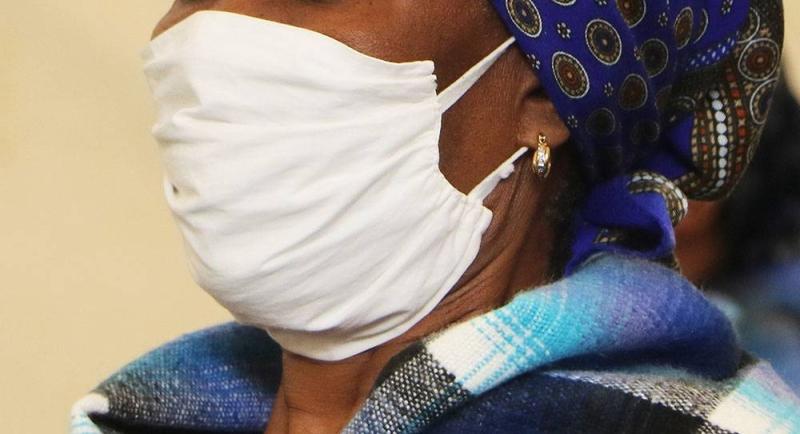Africa-Press – Botswana. First reported in Wuhan, China, the virus SARS CoV-2, commonly now known as Corona virus or COVID-19 virus directed the World Health Organisation (WHO) to declare on January 30, 2020 a public health emergency of international concern.
Later, WHO escalated the outbreak to a global pandemic on March 11, 2020. Life hasn’t been the same ever since the new norm of lockdowns, masks, sanitisers and social distancing were introduced to tackle the menace sown by the virus. It’s now more than two years since the first outbreak was reported from Wuhan.
Increasingly, life became difficult and the frustration of adhering to the COVID-19 restrictions is wearing out everyone. The grim statistics of COVID-19 without doubt will cause us to miss a few heartbeats as we stare at them. As of January 31, 2022, a total of 384 million cases with 5.7 million fatalities were reported worldwide. The United States of America reported the maximum COVID-19 cases for a single country with a total of over 76 million cases and over 900,000 fatalities for the same period.
Sadly, our nation Botswana also was not spared from the onslaught of this deadly virus. Total number of reported cases by the end of January 2022 is over 250,000 with 2,581 fatalities. The three main practices that are advised to incorporate in our lifestyle (as we all know very clearly) to deal with the pandemic are wearing a decent mask, washing/sanitising our hands and keeping a certain minimum distance from others. Though these measures may not guarantee complete protection, it does minimise the risk of contracting the virus significantly.
It’s been established that the virus spreads from an infected person’s mouth or nose in small liquid particles when they cough, sneeze, speak, sing or breathe. These particles range from larger respiratory droplets to smaller aerosols. Breathing in the virus can infect one, if that person is near someone who is infected with the virus.
Also, one could get the infection if the person touches a contaminated surface and then touch their eyes, nose, or mouth. Regular washing/sanitising of the hands using soap or alcohol-based sanitisers prevents the virus to get transferred from hands to face. Covering the mouth and nose with a good mask is one of the best preventative measures that can be adopted. So, it may be worthwhile taking a look at some of the details pertaining to face masks. We are now familiar with at least three types of masks: N95, surgical and cloth masks. N95 masks are designed to have a filtration efficiency of 95%; which simply means it will filter out at least 95% of small particles of size 0.3 microns. In order to get a clearer picture of what this means, one could look at the size of some of the stuff that we are familiar or deal with.
COVID-19 virus has a size of 0.06 to 0.1 microns. So, if we are going just by the size of the virus that we are concerned, it can go through N95. However, the good news is that the virus doesn’t float around just as a separate particle but as droplets or aerosols, which have a higher size. For comparison sake, bacteria have much higher sizes (1 to 5 microns) compared to viruses and can easily be stopped with a N95 mask. We may have seen descriptions like KN95, KF94 or FFP2 featured on the outer layer of the masks. These letters and numbers denote the standard used at different places. N95 is a standard in the US and KN95, KF94 and FFP2 are equivalent standards used in China, Korea and Europe respectively. The most common mask used other than the cloth masks are the (mostly) blue coloured surgical masks.
They come in blue, white, pink, green, black or any other colours. Mostly used in hospital settings, the primary purpose of these masks was to protect the patients from droplets that may originate from a healthcare worker. These surgical masks do not provide a tight fit, but many people prefer them, especially if one must use it for longer durations, simply because of the ease of breathability. Clearly these masks provide less protection compared to N95 masks. These masks can be seen in the market as two-ply or three-ply masks. An average person may find it difficult to make a proper judgement of the quality of mask since no filtration efficiency details can be extracted from the mask. We can see cloth masks being used widely around us. The effectiveness of such masks is questionable though some of them may provide good protection.
Since cloth masks can be easily made by anyone, that’s the cheapest option available for a number of people who cannot afford to buy disposable masks. A certain amount of protection can always be expected, if properly worn, as it creates a barrier in front of mouth and nose. Interestingly, a detailed study carried out have shown that cloth masks with very high filtration efficiencies can be fabricated at home. The key is to select the right cloth material for assembling the homemade masks. A cotton layer with higher thread count, assembled along with silk or chiffon or flannel layers can produce masks with excellent filtration efficiencies.
These materials are readily available in many homes and one’s imagination could lead to interesting and fancy pieces to adorn the face in the quest to filter very small particles that are invisible to naked eye. Two factors mainly determine the quality or efficiency of a respiratory mask. First, its ability to block even smaller particles and the second one is the ease with which one could breathe when wearing a mask.
Very small particles can be stopped by adding more layers or making the mask thicker, but that will substantially hinder one’s breathing and thus not desirable. A good mask will allow easy passage of air, and at the same time, block very small contaminants. Nanotechnology offers tangible solutions to address this issue effectively. Advances in nanotechnology have enabled air and water filtration products to witness spectacular progress in the past decade or so. Nanotechnology allows building materials with fibres that have very small diameter. The finer diameter of the fibers is ideal for creating a mesh with finer space between them allowing better air flow.
So, the technology aids us to have lightweight material with higher contaminant holding capacity and greater air permeability, which significantly improves the breathability. The Botswana Institute for Technology Research and Innovation (BITRI) researchers have optimised conditions to produce nanofibre-based material to make masks of superior quality. Surgical masks are produced at a local manufacturing facility using this nanofibre-layered material. BITRI employees are fortunate to receive periodic supply of these masks with higher filtration efficiencies. These masks have been subjected to a battery of tests including viral filtration tests and found to perform exceedingly well (99.9% virus filtration). If a tight seal can be ensured, these masks can guarantee to block particles containing very small entities like viruses. BITRI currently is in the process of identifying suitable interested parties for the industrial scale production of this material.
The pandemic is far from over. Surveying various factors all around the globe, we have reasons to be optimistic that normalcy (whatever that may be) will greet us sooner. However, it may be better for us to condition our minds to live with this virus for durations that may not be easily predictable. Winter times in Botswana normally are marked with the seasonal flu. Interestingly, the seasonal flu reported for the last two years during winter times was very minimal. One need not be a rocket scientist to crack an answer for the deviation observed during winter in the past couple of years. Everyone, across the board, adhered to the masking and sanitising rituals.
The COVID-19 protocols observed by everyone helped people to stay clear of the influenza viruses responsible for seasonal flu. COVID-19 or not, the atmosphere is full of contaminants. The degree of contamination varies from place to place. A decent barrier to prevent small particles (generally categorised as PM2.5) has the benefit of preventing a number of respiratory illnesses. COVID-19 has taught us how to craft efficient masks from materials that can be found in our homes. Choosing attractive cloth material from some of the scarves used by women folks can create interesting face covers that can make a fashion statement at the same time fetch great health benefits.
*IPE MAVUNKAL is a Senior Researcher, Nanomaterials, Botswana Institute for Technology Research and Innovation (BITRI).
For More News And Analysis About Botswana Follow Africa-Press






